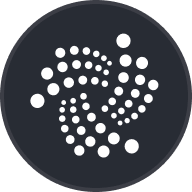In the rapidly evolving crypto industry, the advancement of Web3 technology has become a major focus for projects seeking to attract attention, recruit skilled developers, and boost user engagement. Astar Network (ASTR) stands out as a prime example of such initiatives, actively supporting developers in building decentralized applications (dApps) and Layer 2 solutions through its comprehensive Web3 infrastructure and other valuable benefits.
What is Astar Network
Astar Network, established in 2019, primarily focuses on assisting developers in building dApps. The platform offers a robust and interoperable Web3 infrastructure, along with comprehensive incubation programs, attractive financial incentives, and technical support.
At its core, Astar's mission is to empower developers by providing them with cutting-edge solutions, such as Ethereum Virtual Machines (EVM), ensuring compatibility with existing developer ecosystems. Additionally, Astar is actively working on developing a parachain where both EVMs and WebAssembly (WASMs) smart contracts can seamlessly coexist and interact, further expanding the possibilities for dApp development.
The Astar Network team
Astar Network was founded by blockchain pioneer Sota Watanabe in 2019. Watanabe's accomplishments include being featured in Forbes 30 Under 30 Asia in 2022 and holding an economics degree from Japan's prestigious Keio University. Before Astar, he served as a marketing specialist at San Francisco-based IT firm, Chronicled, and also founded companies like Next Web Capital.
In 2021, his project, Plasm Network, underwent a rebranding and emerged as Astar Network. This transformation paved the way for the platform's launch as a multi-chain smart contract platform on Polkadot in early 2022,
How does Astar Network work
Astar Network serves as a bridge connecting the Polkadot ecosystem with other L1 blockchains like Cosmos and Ethereum. It achieves this by leveraging a Polkadot parachain to operate as a multi-chain dApp hub, fostering cross-chain compatibility and empowering developers to build and deploy their dApps across multiple blockchain networks.
The network provides comprehensive support for decentralized autonomous organizations (DAOs), decentralized finance (DeFi), and non-fungible tokens (NFTs), allowing developers to shift their focus from infrastructure to application development.
Astar Network operates on two distinct layers. The first layer is built on the Substrate framework, laying a strong foundation for the network's functionality. Meanwhile, the second layer utilizes Optimistic Virtual Machine (OVM) to enhance scalability, ensuring efficient and seamless operations across the platform.
Astar Network’s native token: ASTR
Astar Network's native cryptocurrency, ASTR, has a total supply of 7 billion tokens and is subject to an annual inflation of 10 percent.
ASTR maintains a 1:1 ratio for liquidity and staking, ensuring that for each token used for liquidity, an equivalent amount is available for staking. This allows for a balanced and controlled distribution of ASTR tokens within the Astar Network ecosystem, preventing excessive concentration in either liquidity or staking activities.
To effectively manage inflation, tokens are released gradually in multiple drops. Moreover, staking rewards increase proportionately with the inflation rate, providing strong incentives for active participation in the network and empowering stakers to earn more as they contribute to its growth and stability.
ASTR use cases
ASTR serves various use cases within its ecosystem. Firstly, it serves as payment for on-chain transaction fees. Secondly, it is an essential utility token for building Layer 2 applications. Furthermore, ASTR plays a vital role in governance, granting holders the rights to participate in the decision-making process by voting on proposals or submitting their own.
ASTR distribution
Astar Network allocated its tokens in the following manner:
- 20 percent: Distributed through Astar Network's initial parachain auction on Polkadot
- 30 percent: Reserved for early users who supported the network via staking and crowdfunding
- 10 percent: Future project development
- 5 percent: Parachain auction reserve
- 5 percent: On-chain DAO
- 5 percent: Marketing efforts
- 10 percent: Early financial backers
- 5 percent: Team
- 10 percent: Foundation
Astar Network: The road ahead
Astar Network stands as a beacon of innovation and progress in the rapidly evolving cryptocurrency landscape. With its commitment to empowering developers through an interoperable Web3 infrastructure, it has paved the way for the creation of cutting-edge dApps and Layer 2 solutions. As the network continues to expand and develop, it holds the promise of becoming a full-scale multi-chain smart contract platform, further revolutionizing the way we interact with blockchain technology.



































